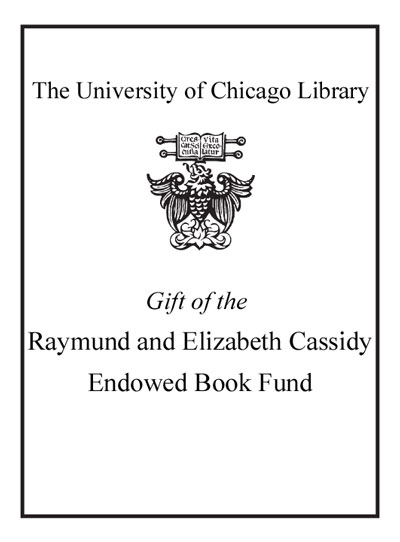Few observers can deny that the visual arts in recent years have attracted enthusiasm and opprobrium in more or less equal degree. Critics of new art have often complained that the formal legacy of the great artistic traditions of the past have become all but invisible in the hectic, competitive, and sometimes mystifying practices with which younger artists are routinely associated. But these voices too often ignore how modern art in the sense we mean today was invented well over a century ago, and still pursues a vigorous experimental agenda with an energy and momentum seldom before seen in public culture, sparking furious debate and rousing hostile passions on every side. Principled opponents of contemporary art also fail to see how the experimental agenda of modern art has deep roots in a far older philosophical mission of art, to provoke demanding questions and hazard risky answers about the pressing moral questions of the day. In the last quarter of the twentieth century and the opening years of the twenty-first, the most difficult new art has often had provocative things to say about the role of the art museum, the legitimacy of the market, the identity and meaning of the artwork, and the place and function of the artist within a technically developed, broadly democratic consumer society. From the 196os until the turn of the twenty-first century, new art has at the same time proved adept at distinguishing itself from the surrounding culture of films, advertisements, and commercial images, with which it enjoys an oblique, if critical, proximity. Despite a tide of academic writing that has often sought to subsume it within this larger continuum of images--the "turn" to the visual that some believe now typifies our Postmodernist world--the newest visual art demands more sustained attention, prompts more demanding critical writing, and seeks out more elevated registers of awareness than was ever hoped for by advertising men, TV moguls, and the graphic arts. For today's critic, the field of international contemporary art has become too crowded and energetic for every significant artist, grouping, or exhibition to be reviewed exhaustively, and so I have tried instead to take the measure of recent activity by treating symptomatic examples, by looking at geographical regions, and by examining critical schools. The project has its origins in a detailed revision of an earlier (1995) book. The selection in turn has been guided by lessons learnt in two other parts of my work as an art historian: in museology, and in the art of Central and Eastern Europe respectively. From the first comes the broad principle that the cognitive gains of new art reach their highest level only in the light of sustained inquiry into the curatorial conditions under which a work was brought to exhibition--into the spaces of viewing opened for us in today's spectacular new museums of art. From the second comes the conviction that the geopolitics of American and West European art have been changing rapidly since the fall of the Communist bloc and the end of the Cold War, under pressure from the expansion of the electronic media and the breakdown of national, linguistic, aid cultural barriers. The proliferation of a formerly bounded North Atlantic culture into what promises (or threatens) to become a unified global network is perhaps only the latest of the paradoxes and challenges that face the contemporary visual arts tomorrow and today. My intellectual debts are to those artists, critics, and curators across many continents whose imaginative adventures have provided the subject matter for this book. I must also thank several individuals and organizations for their cooperation, among them Marion Busch of the Museum Boymans-Van Beuningen, Rotterdam; Richard Francis of the Museum of Contemporary Art, Chicago; Victoria Henry of the Canadian Museum of Civilization, Ottawa; Wolfram Kiepe of the Berlinische Galerie, Berlin; Sophie Grieg and Honey Luard of White Cube Gallery London; Portland McCormick of the Museum of Contemporary Art, Los Angeles; Matthew Slotover of Frieze magazine, London; Karin Stengel of the Documenta Archiv, Kassel; Andreas Hapgemayer of Museion, Bolzano; Dr. Jan KF12 of the Czech Museum of Fine Arts, Prague; Dr. Alexander Borovsky of the State Russian Museum, St. Petersburg; the Ronald Feldman Gallery, New York; the Andrea Rosen Gallery New York; the Sidney Janis Gallery New York; the Galerie Gerald Piltzer, Paris; the Gallery Sties, Kronberg; the Neue Galerie am Landesmuseum, Graz; the Martin-Gropius-Bau, Berlin; and the patient staff of the Hyman Kreitman Research Centre, Tate Gallery London. A number of artists were generous enough to enter into detailed correspondence in response to questions, among them Laurie Parsons, Susan Smith, Tehching Hsieh, Malcolm Le Grice, Cynthia Carlson, and Oleg Kulik. For practical matters I am indebted to the photographer Mike Halliwell of the University of Southampton, to the critic Lucy Cotter, and to my research assistants Liz Atkinson and Frances Taylor. My editor, Robert Shore, and picture researcher, Emma Brown, at Laurence King Publishing have shown friendly cooperation throughout. The text was read in part by Marko Daniel, who instructed me in the art of contemporary China and Taiwan. I am finally grateful to the American reviewers of the manuscript, who lent a series of useful perspectives to the work: Erika Doss, University of Colorado; Jelena Stojanovic, Ithaca College; Joy Sperling, Denison University; Blake Stimson, University of California at Davis; Howard Risatti, Virginia Commonwealth University; Bill Anthes, University of Memphis; Paul Ivey, University of Arizona; and Karl Fugelso, Towson University. The remaining emphases and omissions are my own. Excerpted from Contemporary Art: Art since 1970 by Brandon Taylor All rights reserved by the original copyright owners. Excerpts are provided for display purposes only and may not be reproduced, reprinted or distributed without the written permission of the publisher.

